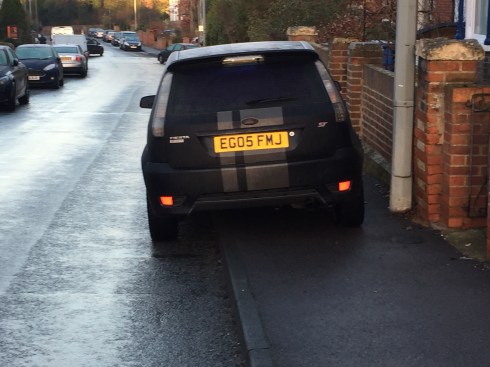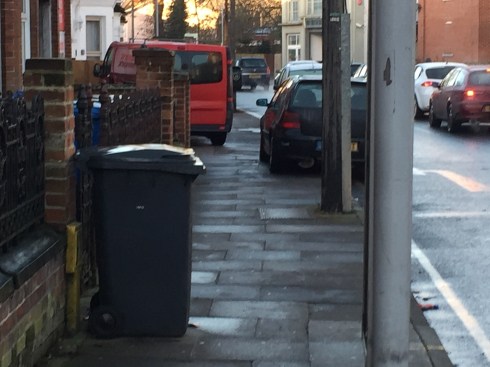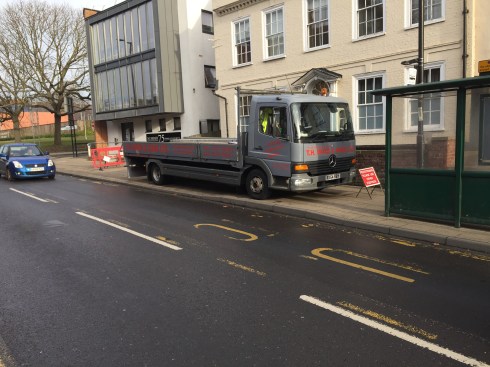I have just been alerted to the fact that the government is consulting on a change that would require local authorities to allow developers to provide as much parking within their developments as they wish ‘to meet market demand‘ with a suggestion that this would ‘tackle the on-street parking problem’. Consultation responses need to be in by the 26th September. Please ensure relevant organisations are aware of this one which needs a clear response.
The offending text is hidden away towards the end of this long consultation document. In this excellent article “Pickles and jam jars” in Local Transport Today (subscription) John Dales wrote:
“Nowhere in the introduction to the consultation (page five), or in the scope of the relevant section two (page 18) is there the slightest indication that there’s anything important about parking anywhere in the document. Nevertheless, under the section heading Reducing planning regulations to support housing, high streets and growth, under the sub-heading Supporting a mixed and vibrant high street, and last of all the matters listed under Proposal H: Expanded facilities for existing retailers are buried paragraphs 2.77 and 2.78 (under the sub-sub-sub-heading Maximum parking standards).
Paragraph 2.77 begins with the superfluous statement that “the Government supports the motorist” and ends by stating that “Parking standards are now a matter for local authorities”. Paragraph 2.78 reveals at once that this a lie, issuing the thinly-veiled threat that “the Government wants to understand whether local authorities are stopping builders from providing sufficient parking space to meet market demand”. In this way, smuggled in as being something that will somehow help retailers, we find a proposal that plainly has the potential to undermine both local democracy and sensible planning as they apply to all land uses, not just shops. We also see, in the phrase “meet market demand”, just how doctrinaire the secretary of state is when it comes to the use of private cars”
Here is the offending section in full (highlights are my own):
Maximum parking standards
2.77 The Government supports the motorist and wants to see adequate parking provision for them. For this reason, we removed the previous administration’s restrictions on the number of parking spaces for new developments. And in March
this year we published new planning guidance, which encourages local authorities to improve the quality of parking in town centres and, where it is necessary to ensure their vitality, the quantity too. Parking standards are now matters for local authorities.
2.78 We are aware that some local authorities appear to have adopted a more flexible approach, and this is to be welcomed, but the Government now wishes to understand whether more action is needed to tackle on-street parking problems. We want to understand whether local authorities are stopping builders from providing sufficient parking space to meet market demand. We also want to ensure that local authorities in their Local Plans have properly reviewed their parking policies and brought them up to date.
Question 2.16: Do you agree that parking policy should be strengthened to tackle on-street parking problems by restricting powers to set maximum parking standards?
Is it not a good idea to provide more on-property parking I hear some people ask? Well not really. When an area has a lot of cars then there will be a lot of commuting. When there is a lot of commuting the roads get full, public transport gets slower, cycling and walking get less attractive and even the motorists complain. When motorists finally get to the where they are going they find the car park is full and complain. In addition the density of housing reduces and commutes get longer making all forms of transport more expensive and commutes longer (LA is a good example of where this all ends). Planners have known for years that this is what happens, and the last conservative government accepted this in 1994 after the big road protests. Since then they have obviously forgotten. Let’s remind them! The alternative is denser building where places are closer together and within reach by public transport, bicycle or on foot.
Again – do please make sure that all the relevant organisation are aware of this consultation and the need to rebut it by the 26th September.
Incidentally I am also planning to look at the separate consultation as detailed in the ‘The right to challenge parking policies: a discussion paper‘ which has a closing date of 10 October 2014. More later.
























